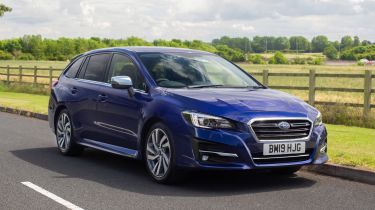Subaru Levorg review - MPG, CO2 and Running Costs
Subaru’s insistence on petrol and four-wheel drive means fuel economy suffers. Residuals look reasonable, however

The Levorg will never be as cheap to run as most rivals because of the lack of a frugal diesel offering and the extra weight of the 4x4 drivetrain. The 2.0-litre petrol engine was introduced partly to improve economy and emissions over the old 1.6 turbo and it did, but only to an unremarkable 32.6mpg on the WLTP combined cycle and 167g/km of CO2 on an NEDC correlated basis.
The CO2 emissions mean that the Levorg falls into the 36% tax bracket under the 2020/21 rules. It’s a little higher than what you’d pay on other petrol estates of this specification and, again, most of them offer you the choice of cheaper-to-tax diesel or hybrid engine variants. At least no Levorg exceeds the £40,000+ tax surcharge for new cars.
Insurance Groups
The Levorg originally sat in insurance group 24, but the adoption of Subaru’s Eyesight safety tech dropped it down to group 20 and the new 2.0-litre engine takes it into group 17. That’s competitive with rivals and gives the Subaru an edge in many cases.
Depreciation
The Levorg’s niche appeal in the UK means residual value forecasts are surprisingly good – it’s expected to retain around 41% of its value after three years. That’s not remarkable, but it is better than a number of mainstream estates.








